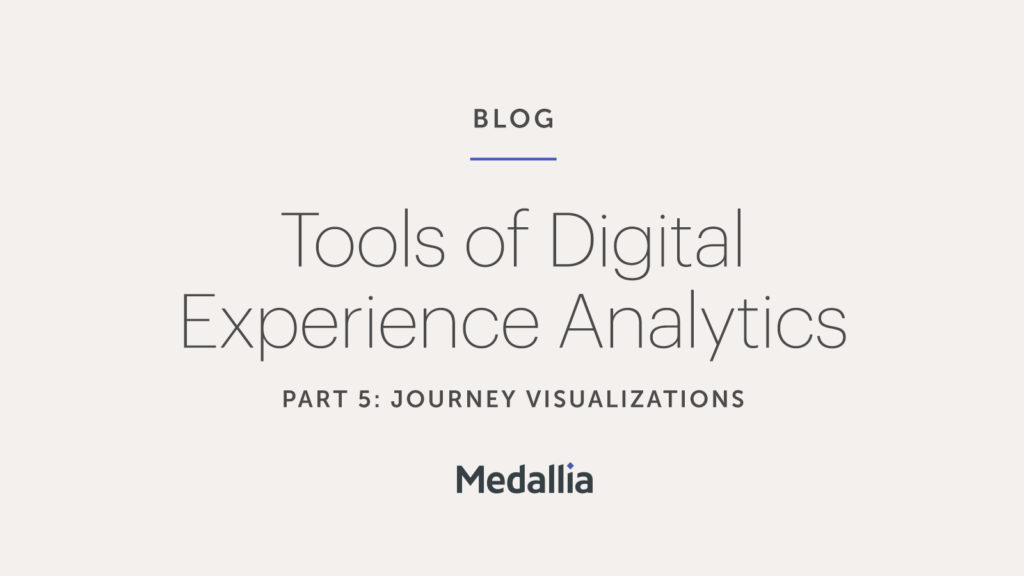Customers are regularly interacting with your brand’s digital channels — here’s how to use their feedback to optimize their digital experience.
Do you feel like you’re not realizing the full potential of feedback?
Feedback is at the center of every successful customer experience (CX) program. It allows your organization to create a direct dialogue between your brand and your customer digitally. As customers share their feedback, you uncover insights and opportunities necessary to deliver impactful results to your bottom line.
You may be closing the loop with individual customers, but you also could be ignoring specific actions that bolster revenue.
Leading brands such as mobile carrier Vodafone UK are all-in on digital experience (DX) because, more than ever, customers choose to click and tap online to make buying decisions. In an instant, you’ve either won a customer for a lifetime or lost them for good. There’s little in-between when it comes to digital experiences, and that’s why you need to tap into your customer feedback to drive change and achieve results.
Using Feedback to Optimize Digital Experiences: 5 Ways to Maximize Performance
Putting feedback in the driver’s seat enables your organization to identify opportunities and act on mission-critical insights. Ultimately, this approach increases customer satisfaction (CSAT), decreases operational costs, and drives growth across the organization.
Here’s how to do more with feedback and optimize digital experiences for customers.
#1. Intercept customers at the right moments
It’s all about when you ask the question.
There are certain times in a customer’s journey when they’re probably not interested in giving feedback. For example, triggering a survey as soon as a customer enters your website or when they click on a particular product is probably more disruptive than helpful.
But there are other times when customers may appreciate the chance to voice their opinion. For example, if a customer has been looping back and forth between multiple product pages for a while, they may be confused by your website’s navigation. Triggering a survey gives the customer an opportunity to express their frustration and maybe circumvent the confusing navigation (especially if the survey links to a live chat where they can get immediate, seamless assistance). Capturing that feedback also gives your team firsthand data on an issue you can easily fix.
Please note the behavioral intelligence widget shown here is for demo purposes only
#2. Pair feedback trends with session replays
We’ve all been there: you have hundreds of pieces of feedback, your Net Promoter Score (NPS®) is steadily declining, and you don’t know where to start.
The first step is to sort your feedback by emerging trends. Text analytics use artificial intelligence (AI) to aggregate feedback topics and then extract meaningful insights from thousands of text-based comments. No matter how you sort your feedback, it’s important to incorporate sentiment analysis so you can understand which topics are trending ‘negative’ and which are ‘positive.’
Once you know your overall feedback trends, it’s time to diagnose root causes. This is when tools like session replays become incredibly valuable. Instead of hunting and pecking for insightful session replays, you’ve narrowed your scope to a hot topic and can visualize actual users’ experiences when they’ve encountered the same issue or have left relevant feedback.
Here’s a tip, too: Make sure your session replay tool has the ability to share session replays across teams so you can streamline any quick fixes on your website or app.
#3. Ask questions that align with your goals
Maybe the simplest way to get more from feedback is to ask questions that you need answers to. Think about your goals for your digital properties. Is it to create more streamlined journeys? Or ensure customers can complete their desired tasks without resorting to a phone call? Capture customer feedback that aligns to these goals.
One common challenge that feedback can help solve is content effectiveness. Are your blog posts and webpages actually encouraging customers to convert? What about your self-help content? Does it enable customers to get what they need on the digital channel? By creating programs designed to capture customer feedback on precise topics, you can get immediate feedback from your most important voice, your customers, and improve your site experience in a meaningful way.
#4. Contextualize NPS and OSAT with other metrics
Almost every feedback program is centered around some key metrics. Whether you’re using NPS or overall satisfaction (OSAT) with the company, having a core metric can help benchmark the success of your initiatives over time.
But sometimes it’s difficult to understand why your key metrics are fluctuating. That’s when it becomes helpful to contextualize your core metrics. Pairing NPS or OSAT with other scores, like Digital Experience Score (DXS), helps uncover some of those unknowns. DXS is the collection of every customer interaction across your digital property, rolled up into one comprehensive score.
Say, for example, your NPS has plummeted in the past three weeks, but your DXS has remained stable. It means that although the digital interactions are not presenting any major experience issues (DXS is high), the customer is still unsatisfied (NPS low). Just by knowing that the DXS is still high, you can fast-track your analysis to a few key interpretations:
- Content: Content is not aligned to users’ expectations
- Journeys: Journeys did not align to the users’ relationship with the brand
- Capability: A user’s desired activity (such as self-service renewal) is not supported on the digital property
#5. Track behaviors associated with feedback
Imagine you could read a customer’s mind as they give feedback. They’re saying one thing, but what are they actually thinking? What is their experience really like?
Reading minds is impossible — understanding customer behaviors, however, isn’t. Using behavioral intelligence means you can get direct insight into customers’ experiences as they’re giving feedback. What are your feedback moments that produce the highest frustration? Or the highest engagement?
Say that a particular survey is always associated with frustrated behavior, and ultimately abandonment. What kind of feedback are you getting from that survey? Is it negative or positive? And more importantly, is it providing you with actionable insights or not?
Chances are, if a survey is always associated with customer frustration, something isn’t right. The problem could be a number of things, ranging from when the survey is triggered to what the survey is asking. Drilling down into session replays can help reveal what exactly is going on and how you can best fix it.
Start Doing More with Customer Feedback to Make Impactful Improvements
Organizations like yours don’t need to do much to optimize digital experiences for customers online. If you’re already collecting customer feedback, you’re halfway there. Now you just need to use the feedback you have to take the smartest action, which is why we’ve laid out the methods above.








